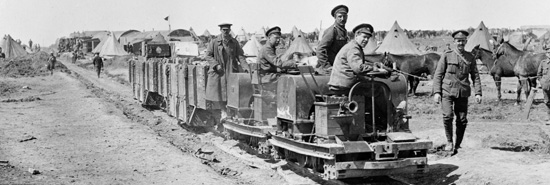Bedford's War Machines

2016 marks the centenary year of both the Battle of the Somme and the year that Simplex petrol locomotives, which were integral to the allied effort on the Western Front began to be made in Bedford. The devastating losses at the Somme led the British Forces to find a new solution to improve supply lines to the front. This new exhibition at The Higgins Bedford takes a close-up look at the Simplex engines and explores Bedford’s home-front contribution to the Great War.
823 Simplex Motor Rail petrol locomotives were exported to the Front from Bedford. The engines were part of a new infrastructure for getting troops, supplies and ammunition to the front lines. Simplex petrol engines were safer than steam engines, which could be targeted by the enemy and were too heavy for the mud-ridden trenches. Other engineering firms in Bedford, including W. H. Allen’s, were also involved in manufacturing war machinery and ammunition for the Front. In 1916, W. H. Allen’s expanded, building a new factory at Biddenham, employing a predominantly female workforce and producing Le Rhone Rotary aircraft engines. The men and women making these machines in Bedford had an essential role in the eventual allied victory in the First World War.
The exhibition, in partnership with Leighton Buzzard Railway, includes a rare surviving Simplex locomotive and wagon, which will be installed in The Higgins Bedford courtyard.
Image credit: Simplexes in use on forward lines, 1917
© Imperial War Museum ref: CO 001259